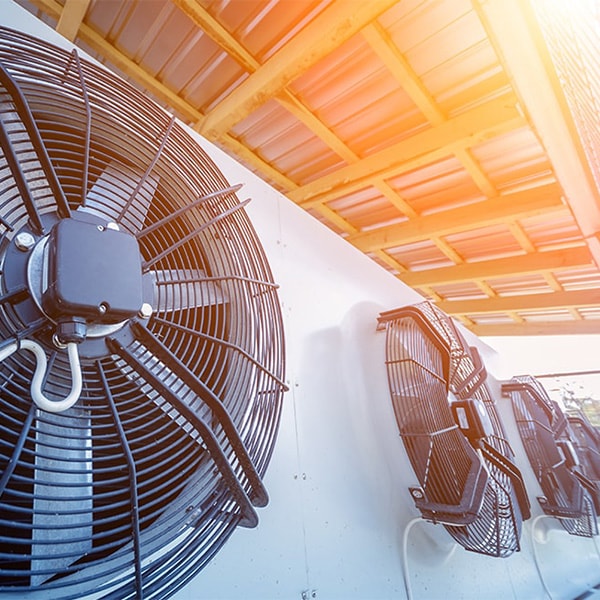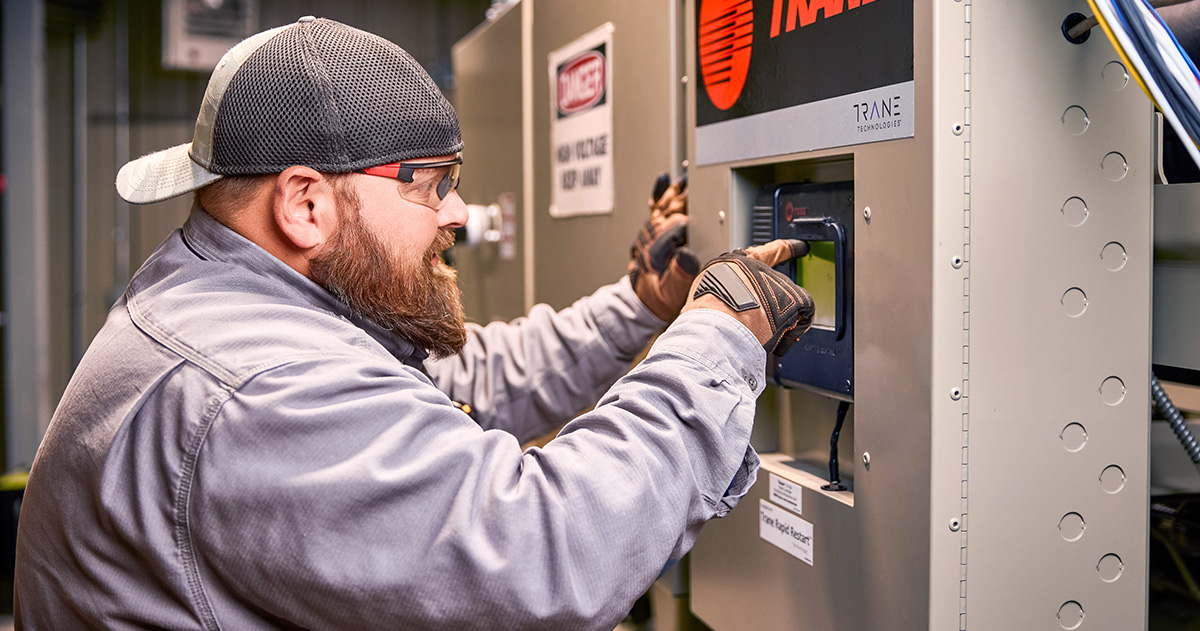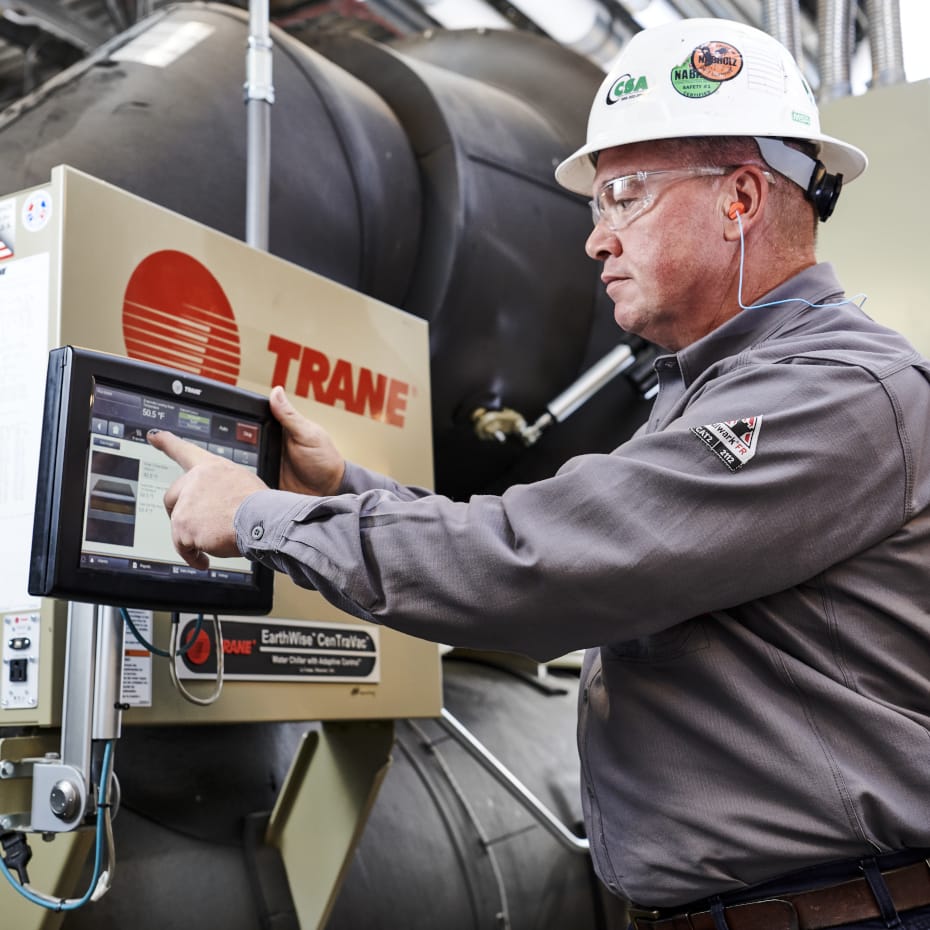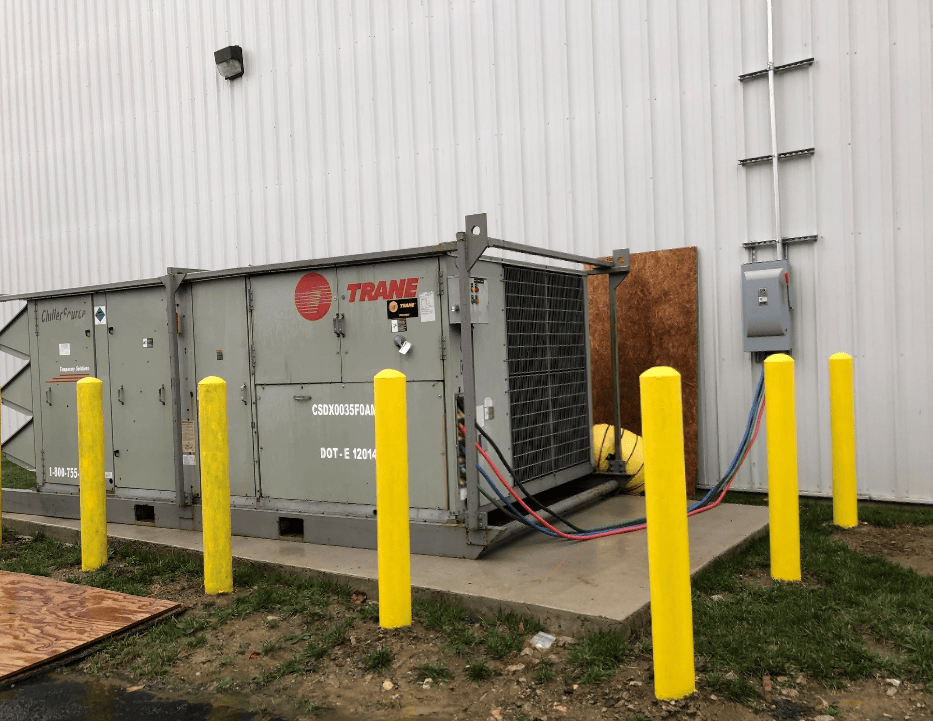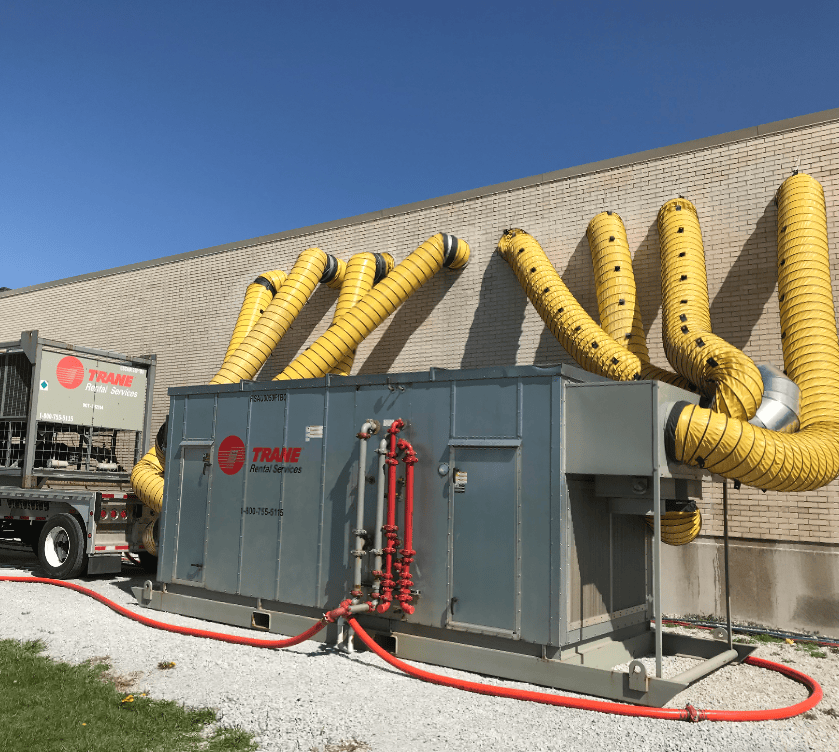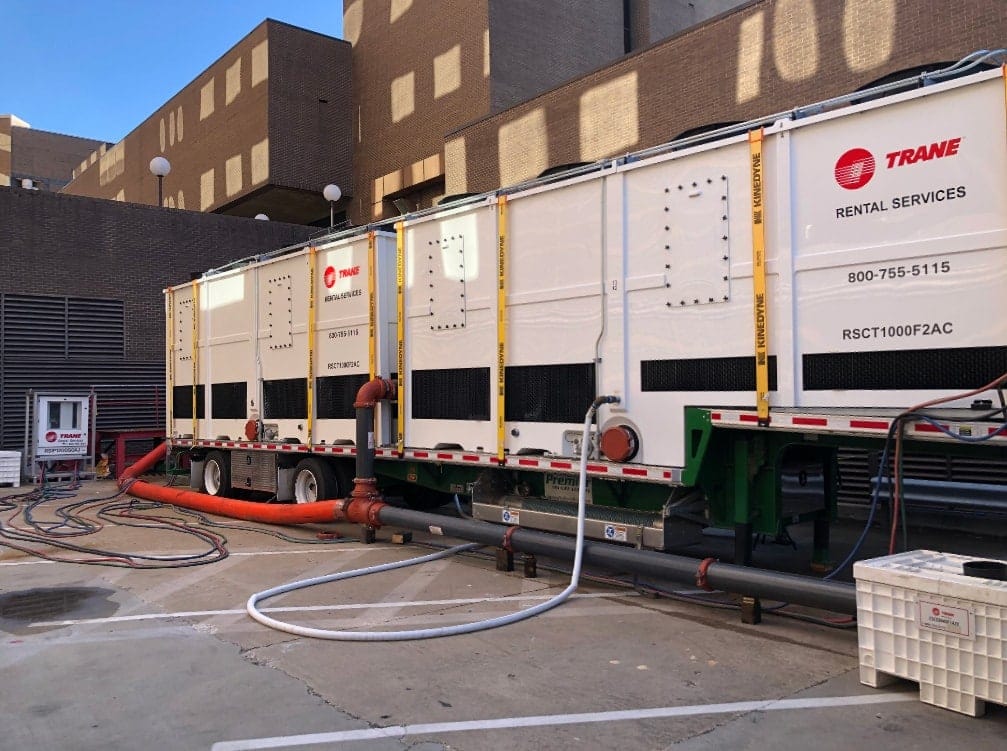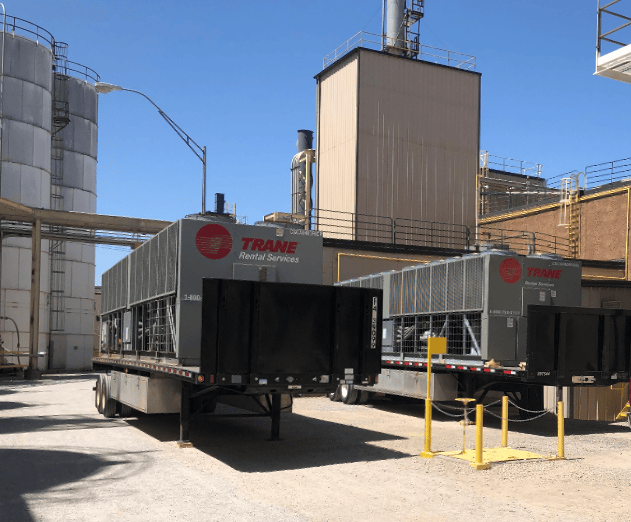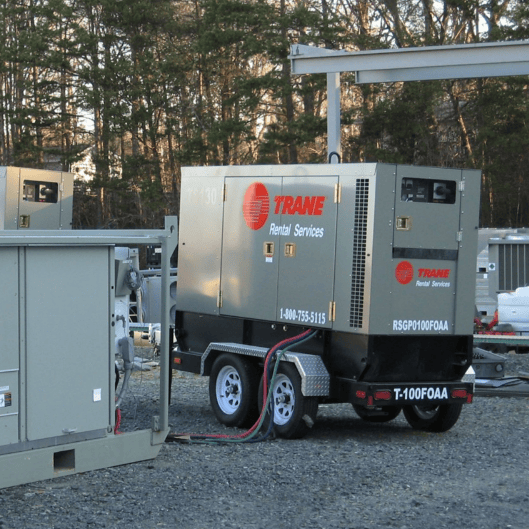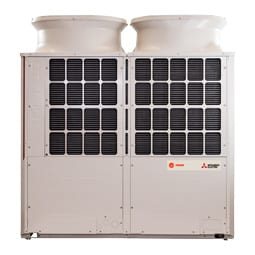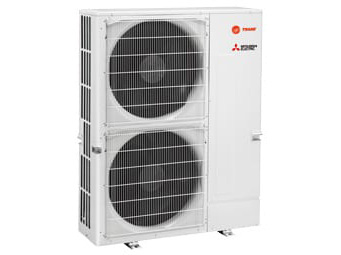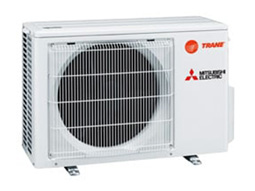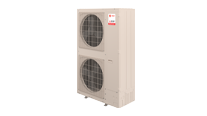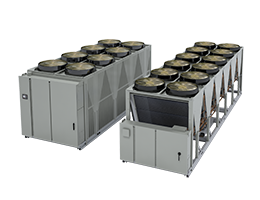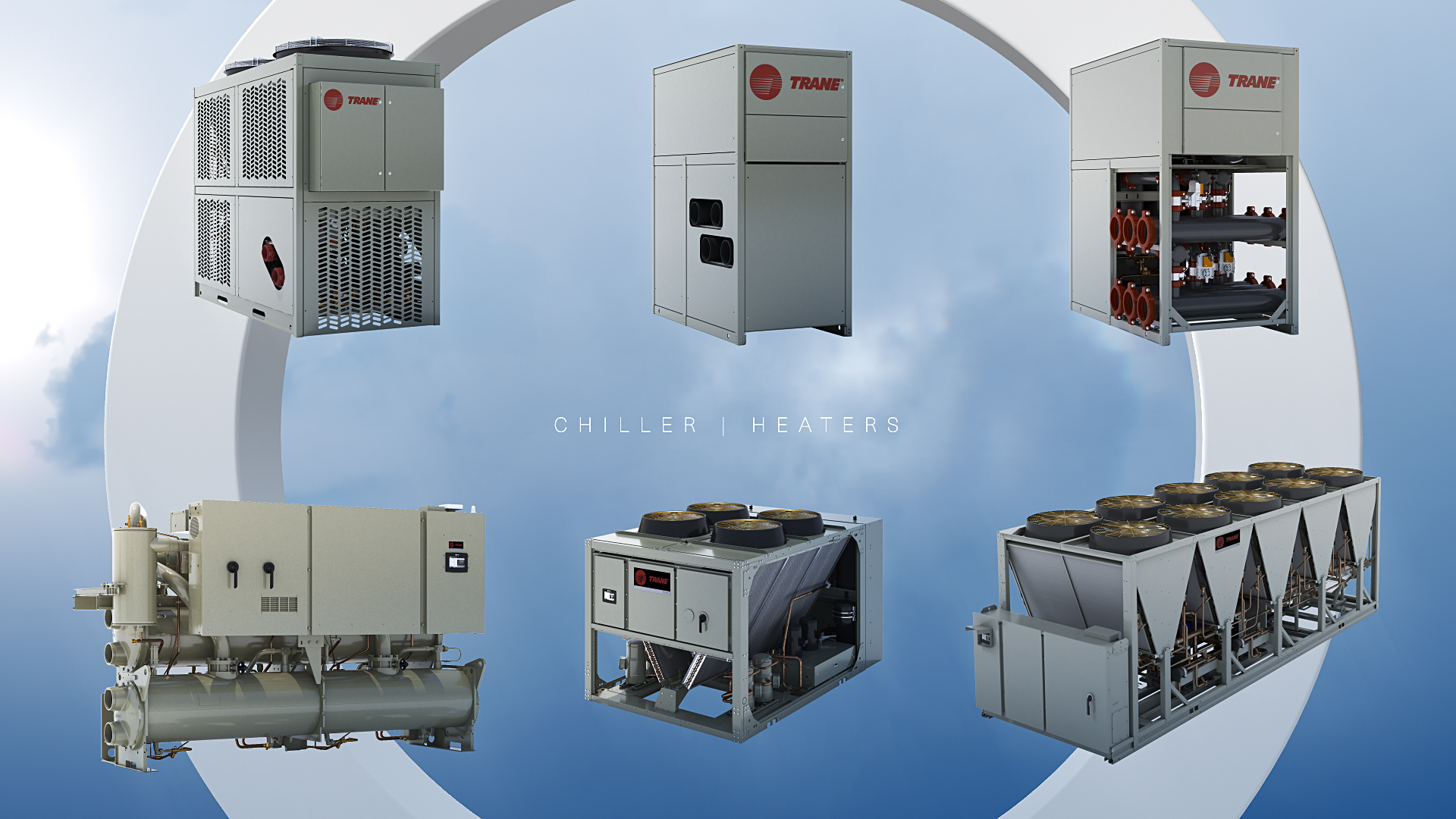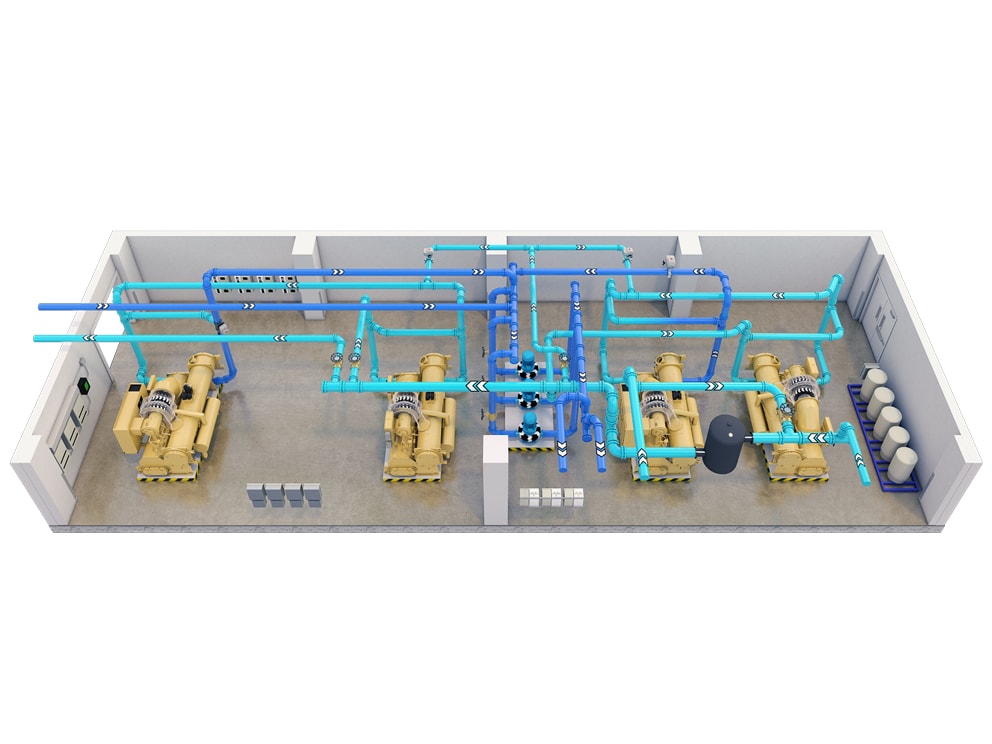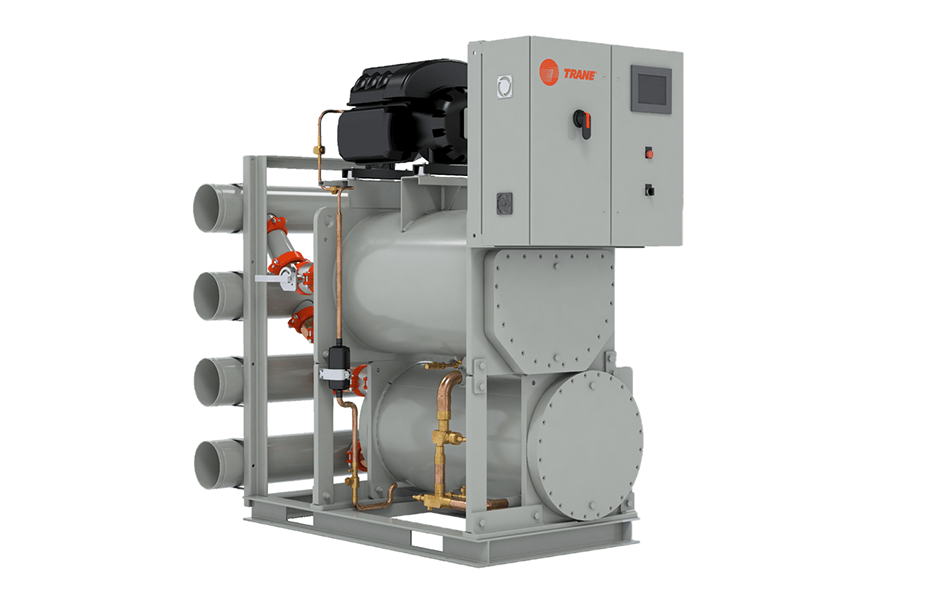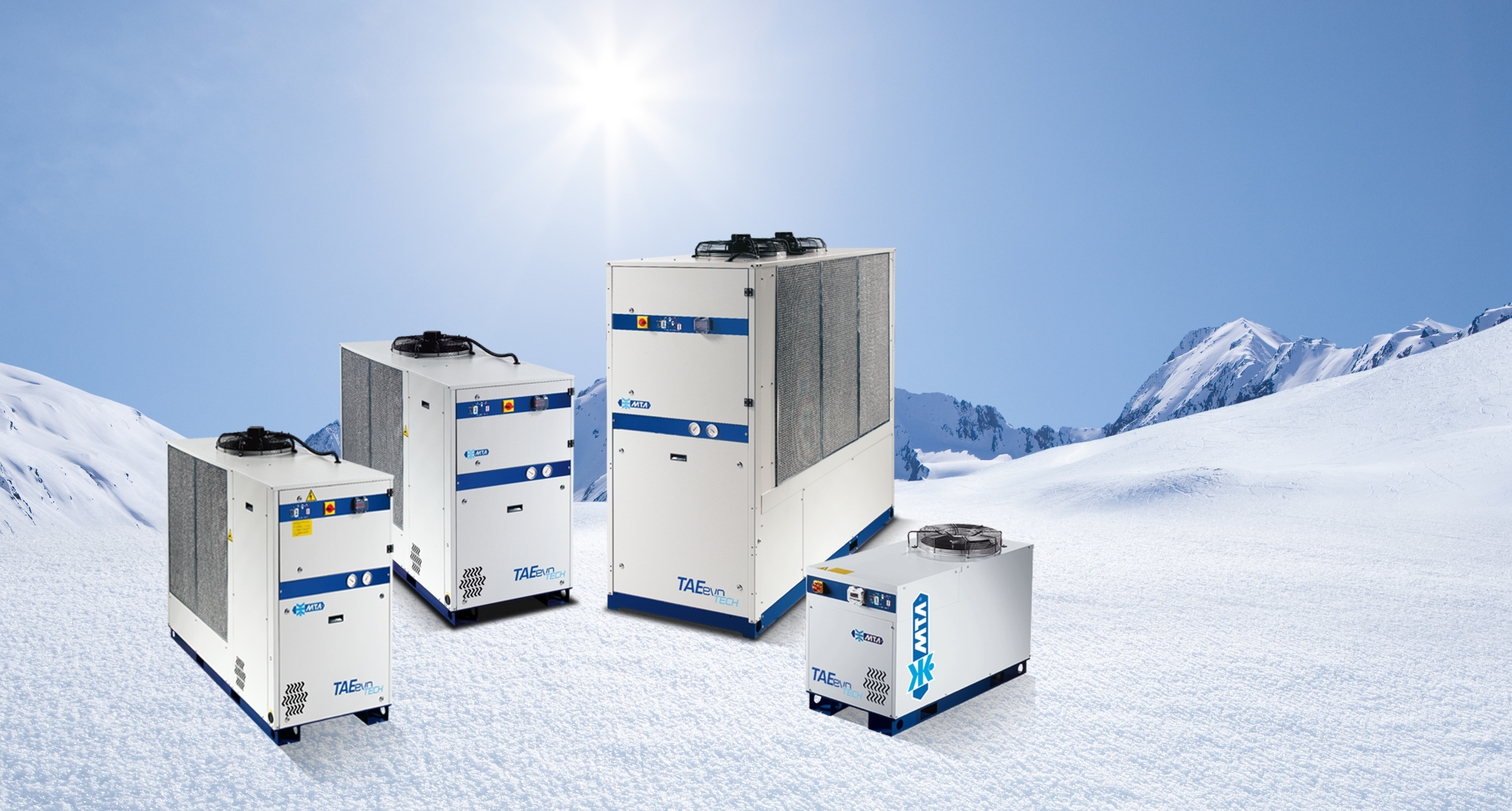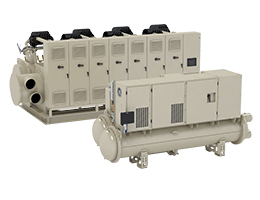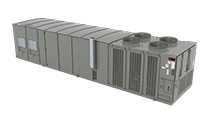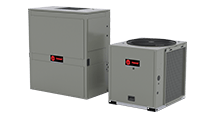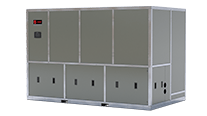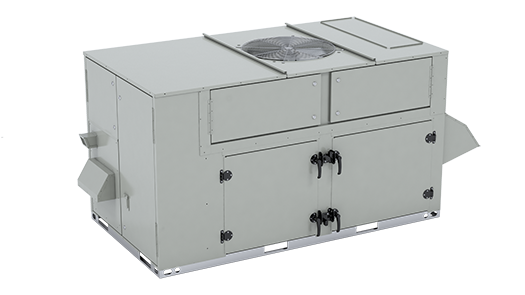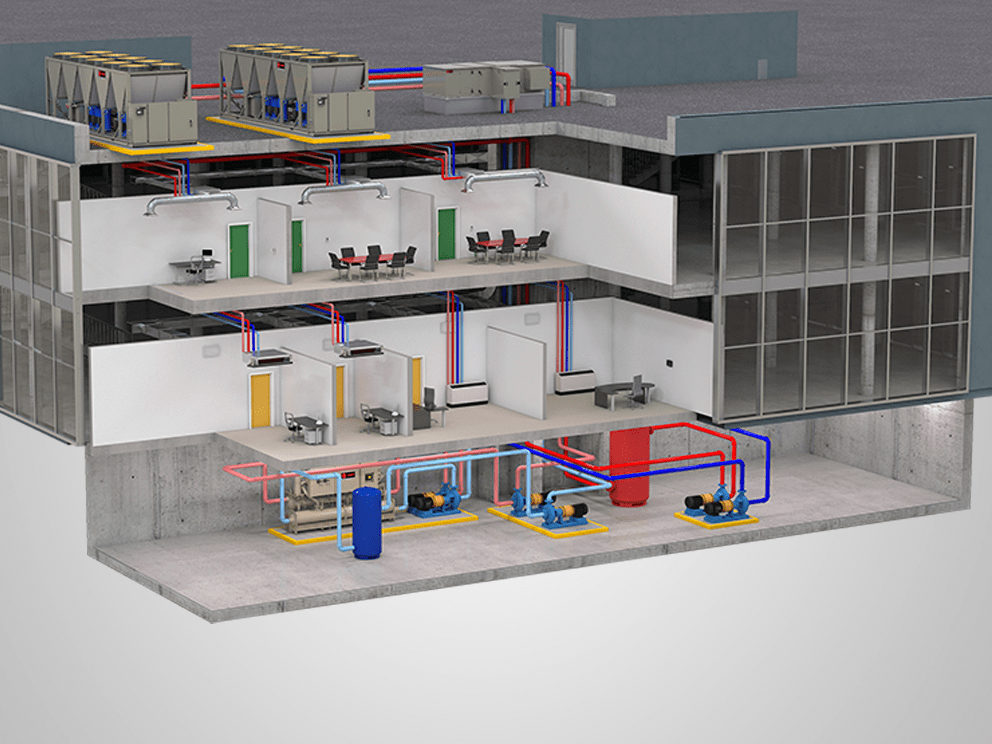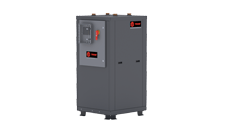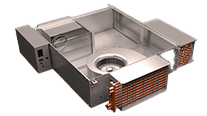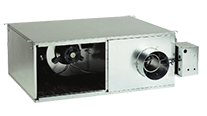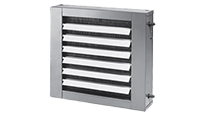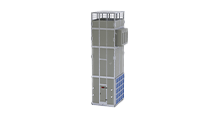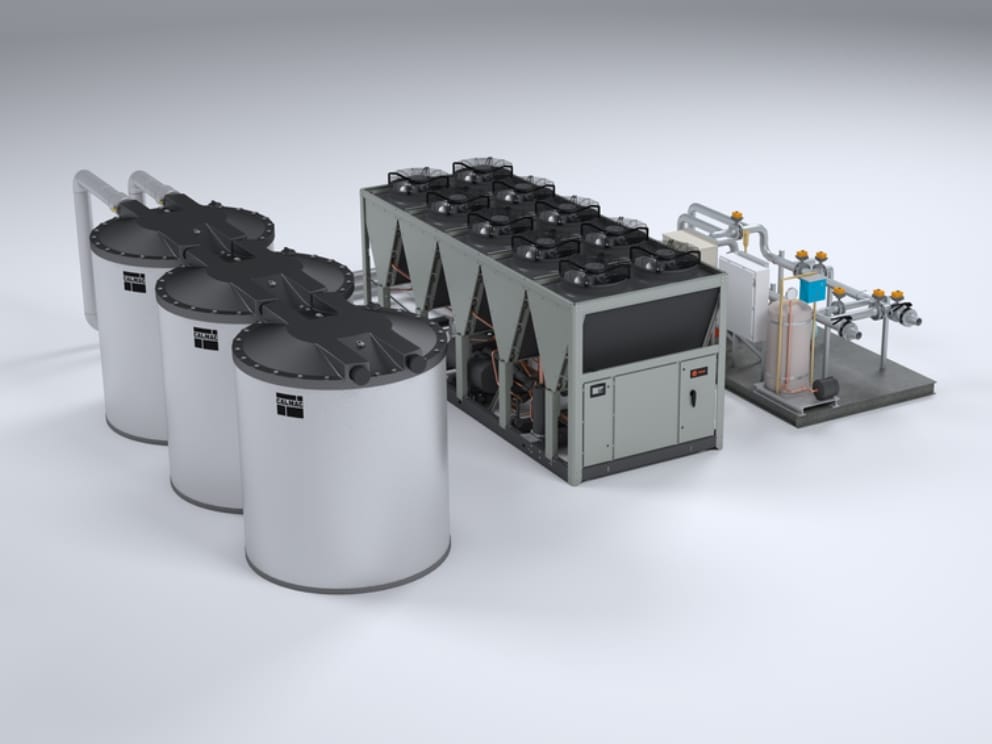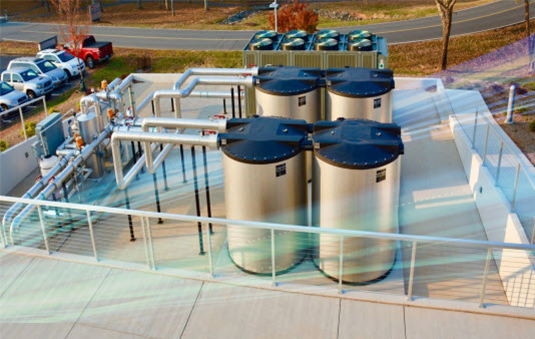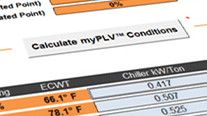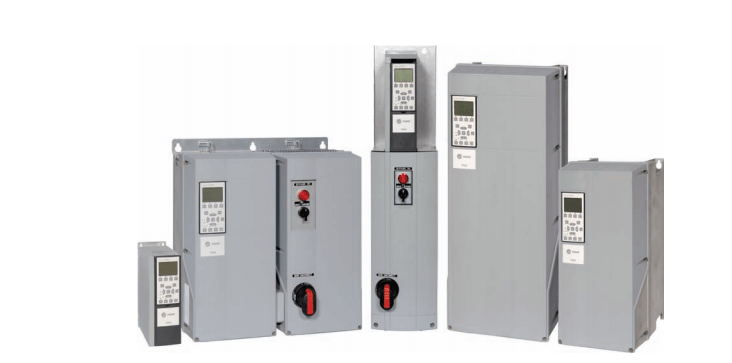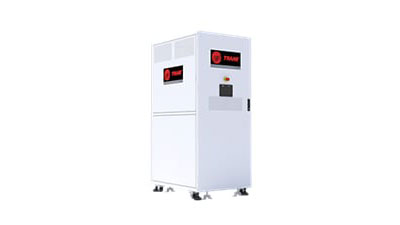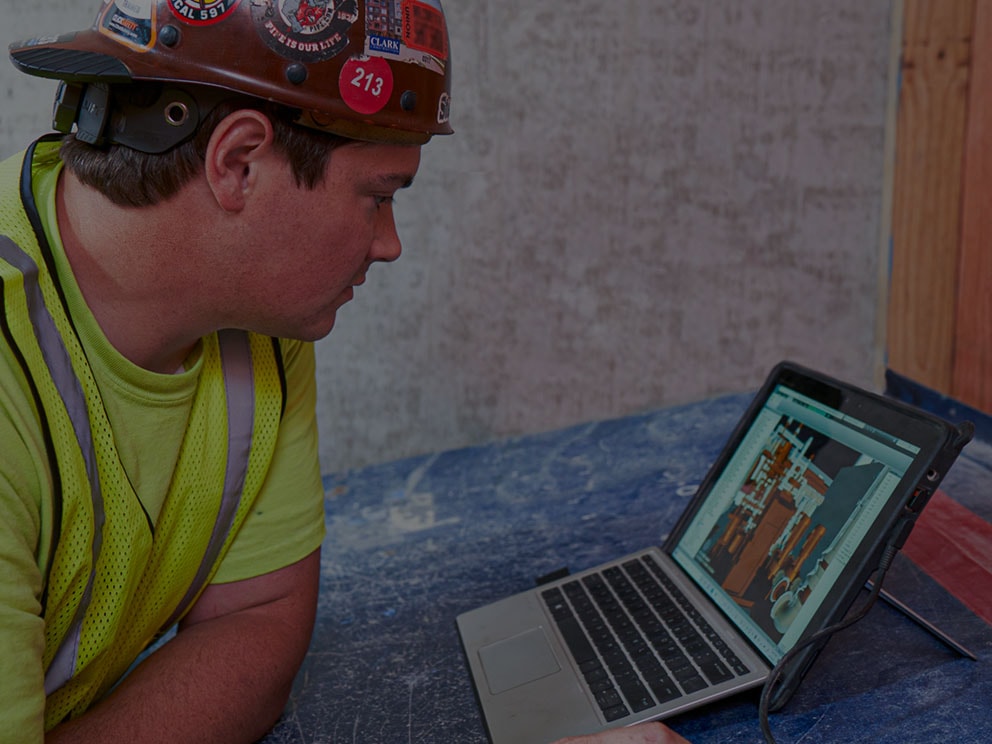Using R22 Refrigerant and Its Alternatives in HVACR Systems
August 21, 2018
R22 was the most popular refrigerant used in commercial and residential air conditioning units for many years because it was considered a safe and cost-efficient refrigerant choice by the heating, ventilation, air conditioning, and refrigeration (HVACR) industry. But as anyone in the industry knows, R22 freon was phased out in the U.S. beginning in 2010 because it depletes the ozone layer.
Once the U.S. EPA began allocating and reducing available quantities of R-22, fear of shortages drove manufacturers, distributors and service companies to immediately stock up on as much R-22 as possible, causing price spikes. However, as time passed and availability continued, prices have stabilized.
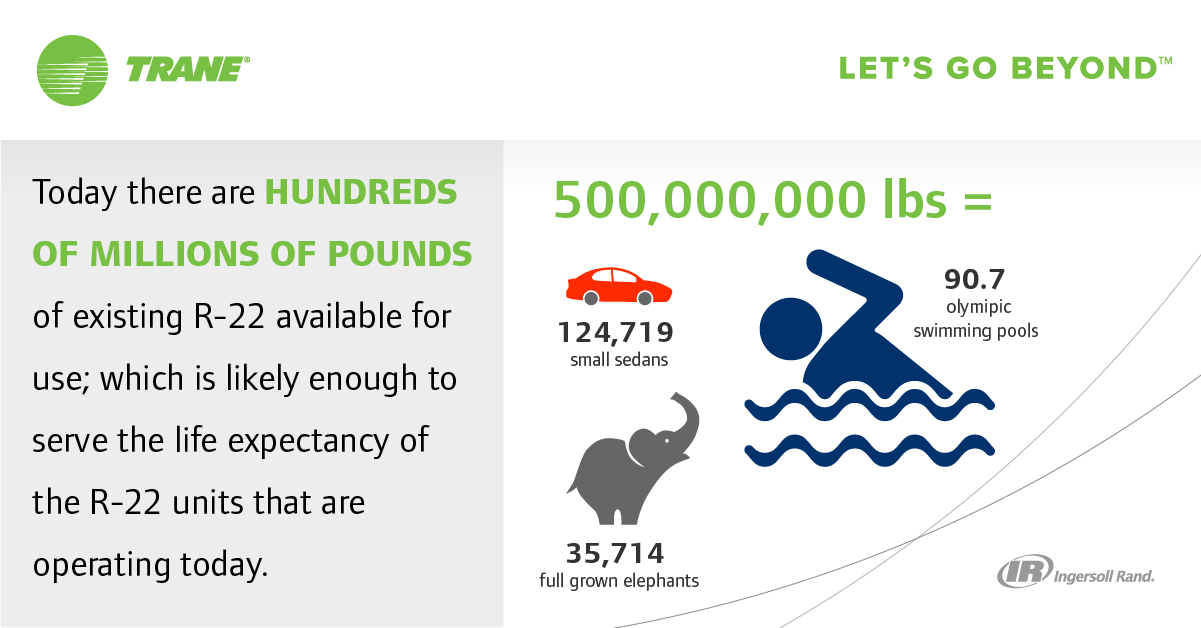
EPA refrigerant phase-out regulations often have complex market impacts that can cause confusion. The R22 phase-out regulation ends new production and import of HCFC-22 (hydrochlorofluorocarbon-22) as of January 1, 2020. After 2020, reclaimed R22 refrigerant can be used for service and maintenance for the life of the equipment.
The reclaim and recycling industry acted early to ensure an adequate supply of R22. Today, hundreds of millions of pounds are available in existing equipment. This will be adequate to ensure full lifetime service needs because a rooftop air conditioning unit lasts about 10 to 15 years, and Trane, along with most other manufacturers, stopped producing commercial air conditioning units with R-22 in 2010. Now, residential equipment has reached the end of its service life, and commercial units are expected to run for a while longer, sustaining the supply for other equipment. Additionally, the accumulated R22 stockpile and recycling and reclamation programs are extending availability. The bottom line is that the risk of R22 demand exceeding supply is very low.
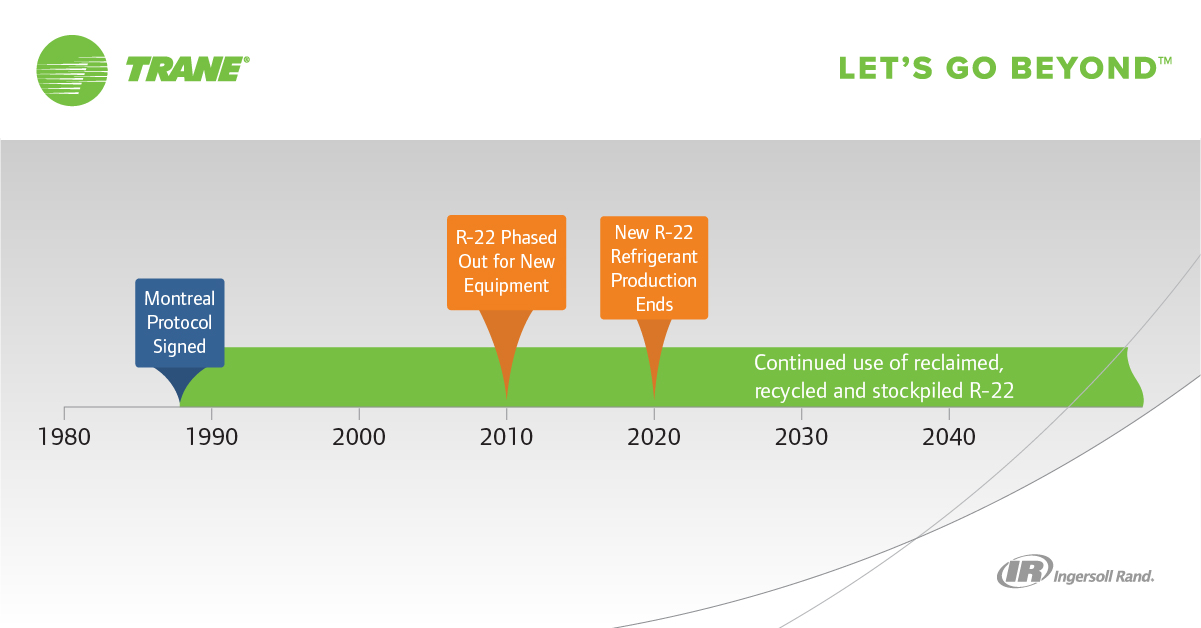
| ASHRAE # | Trade Name | GWP (AR5) | Capacity Change |
| R-22 | - | 1760 | Baseline |
| R-407C | KLEA 407C, AC9000 | 1624 | = |
| R-421A | Choice R421A | 2385 | ↓↓ |
| R-422B | ICOR XAC1 | 2290 | ↓↓ |
| R-422D | ISCEON MO29 | 2473 | ↓ |
| R-422E | R-422E | 2350 | ↓↓ |
| R-424A | RS-44 | 2212 | ↓↓ |
| R-427A | Forane 427A | 2024 | ↓ |
| R-438A | KDD5, ISCEON MO99 | 2059 | ↓ |
| R-453A | RS-44b | 1636 | ↓ |
| R-458A | TdX 20 | 1522 | ↓↓ |
| - | alltemp® | 1300 | ↓↓↓↓ |
What Should System Owners Do Next?
Maintain your service and maintenance schedules for the expected life of the equipment. Proper maintenance helps prevent refrigerant leaks and, if a leak does happen, technicians will catch it early. Even if the price of R-22 climbs, the cost of replacing a few pounds will be relatively minor.
Owners who want to convert an R22 refrigerant system to a different refrigerant should proceed with extreme caution. Air conditioning units—Trane’s and everyone else’s—operate best with the refrigerant they were designed to use. An exact “drop-in” replacement alternative for R22 does not exist, so changing refrigerant isn’t as simple as changing the oil in a car. It requires an engineered approach that evaluates the hardware, lubrication, refrigerant and controls to optimize performance. System efficiency losses and a voided warranty are some of the risks.
How Do You Decide When to Repair Equipment and When to Replace It?
Eventually, your R22-based HVACR equipment will reach the end of its useful life, but how will you know when the time is right to replace it? Consider these factors:
- Evaluate the impact on occupants’ comfort and overall maintenance cost.
- Consider the time and money spent on emergency repairs.
- Estimate the energy savings associated with new, more efficient equipment versus the existing system.
- Consider other customer requirements, such as environmental, budget, or building performance.
Whether maintaining a system that runs on R-22, converting or replacing it with new equipment, make sure you understand the trade-offs of each option.
Maintaining an R-22 system for its anticipated life span is the safest way to maintain efficiency and your warranty.
Before making any decisions regarding refrigerant conversions or system upgrades, be sure to talk to someone who understands the complexities of the regulations and the pros and cons of next-generation refrigerants.


